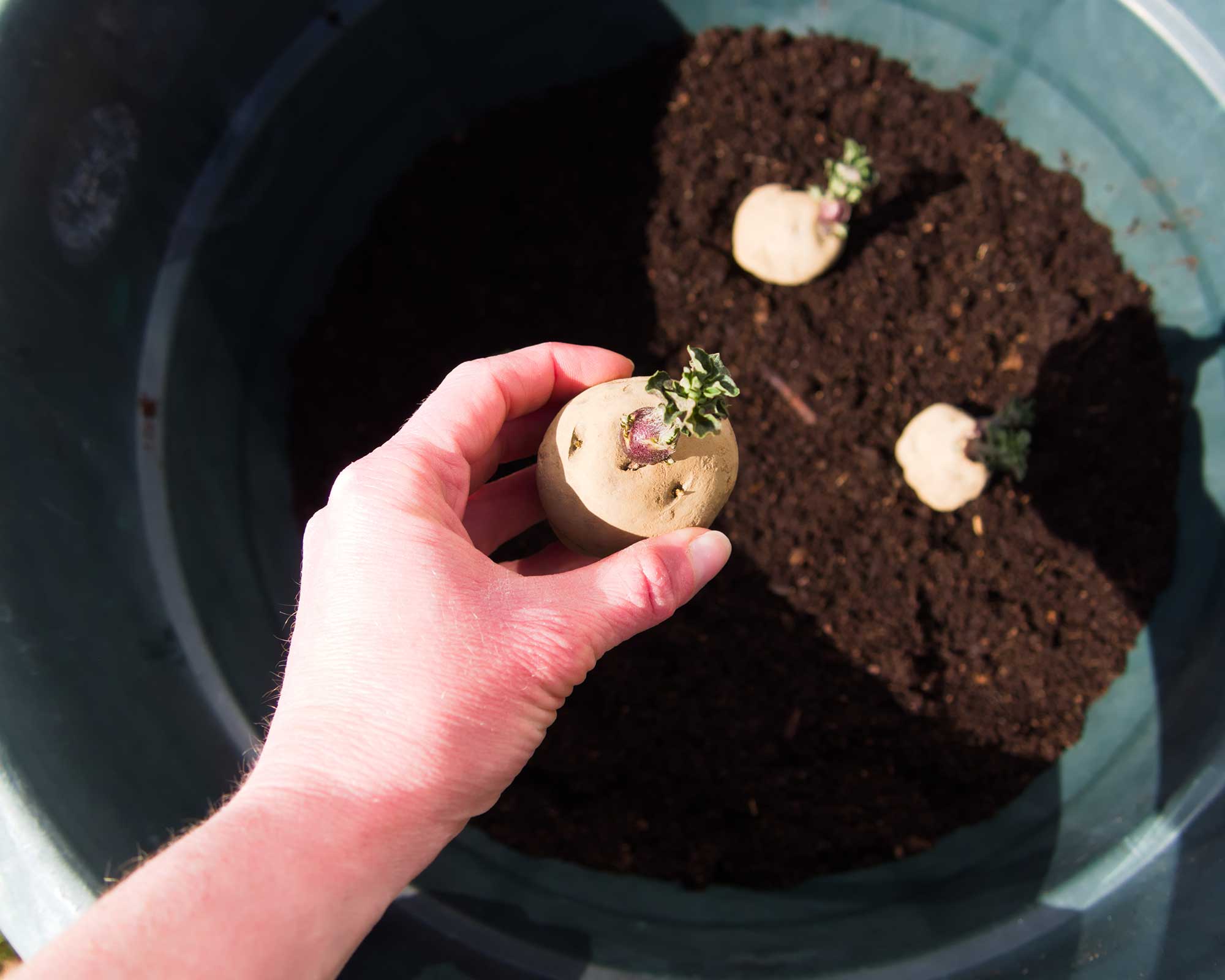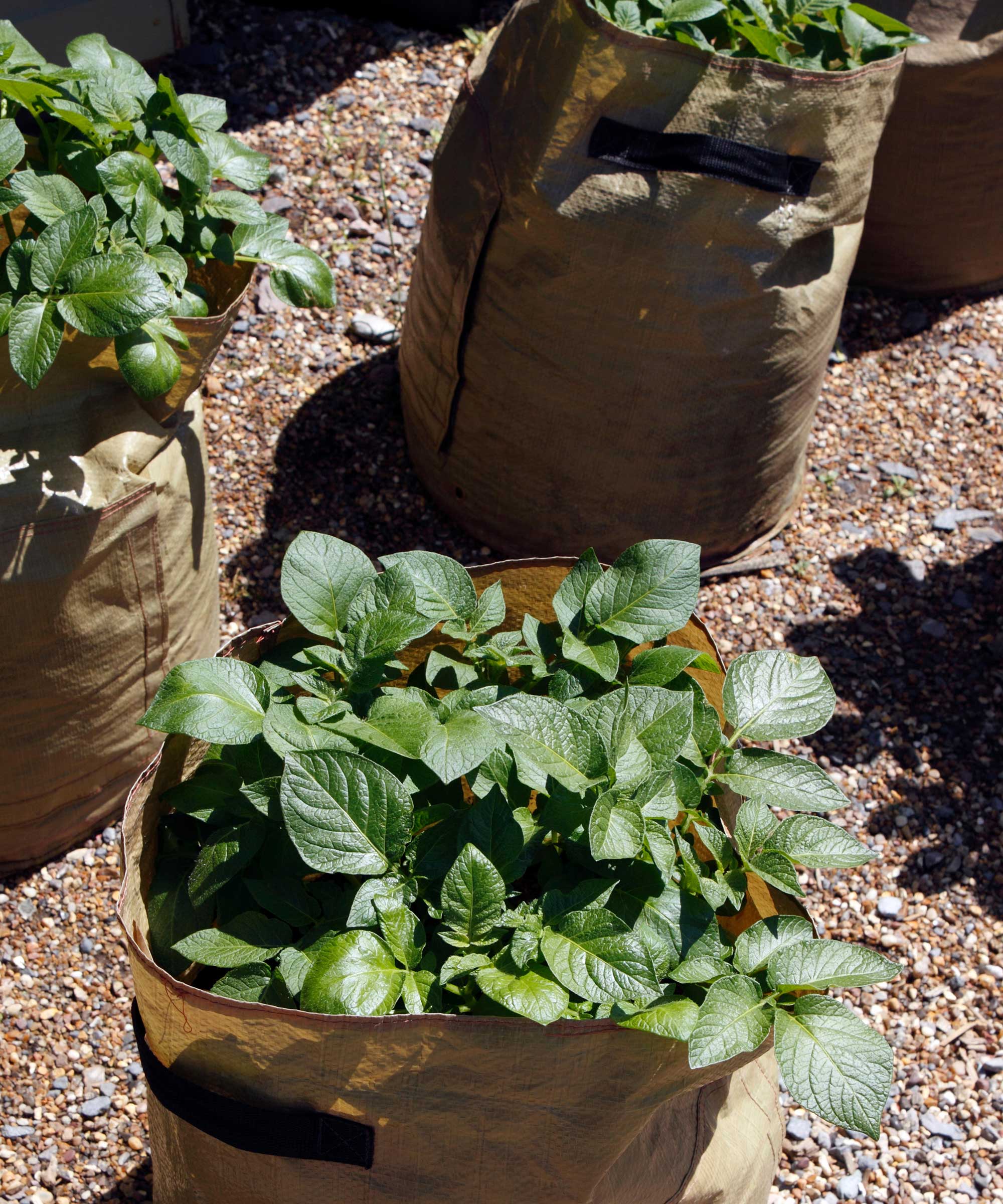Growing potatoes in containers: top tips for these staple crops
Small garden? No problem – growing potatoes in containers is easy with this expert advice


Have you ever wondered about growing potatoes in containers? This root veg is a classic crop for raised garden beds, but not everyone has the space in their backyard. If this sounds like you, don't give up on the idea just yet: spuds can flourish in planters on your patio with the right care.
As with all homegrown harvests, potatoes from your garden taste infinitely better than those bought in a shop. And, they're super versatile. For instance, potato salad with a scattering of fresh herbs and a good dollop of mayonnaise is always a winner at summer BBQs. And everyone loves chunky homemade fries and creamy mash.
If you've already read up on how to grow potatoes, you'll know that they are pretty straightforward once you've got the proper know-how. But, if you're specifically looking to grow them in pots, this guide has everything you need to know.
7 easy steps for growing potatoes in containers
If you like the idea of growing vegetables in pots, then put potatoes on the list. Learning how to grow potatoes in containers is simple, as John Negus of Amateur Gardening explains:
- Pick a large, deep pot with drainage holes in the bottom.
- Mix a general-purpose, peat-free compost with an equal amount of well-rotted farmyard manure or homemade compost if you're composting food scraps and other green waste in your garden.
- Put around 4in (10cm) of your compost mix in the bottom of the container and, depending on its size (you'll want to give the potatoes plenty of space) put two chitted seed potatoes in. 'Early and second varieties are the best,' says John.
- Cover the potatoes with 4in (10cm) of your compost mix and water well. When the stems are 6in (15cm) tall, add another 4in (10cm) of compost. 'This is the equivalent of earthing up potatoes growing in the ground.'
- 'Keep doing this until the top growth has reached within 2in (5cm) of the top of the container.'
- 'Plants in containers need more careful watering than those in the ground, and the most important time is when the tubers reach about the size of a marble – this is usually when the plants are in flower, too. Plenty of water at this time will help the tubers swell.'
- 'If successful, two potatoes should yield a significant number of tubers throughout the depth of the compost,' he says. Harvest them once they have flowered, pulling a few potatoes carefully from the soil using your hands. When all the flowers have turned yellow, you can tip the contents of your containers onto a tarpaulin and harvest any remaining spuds in one go.

When should you plant potatoes in pots?
Just like growing potatoes in the ground, it's best to plant your container crop in spring when risk of frost has passed but temperatures aren't too warm.
Exact timings do vary depending on the variety, though, so it's a good idea to check the packet of your seed potatoes before you plant them.

Should you feed potato plants growing in containers?
Fertilizing plants can help give them a boost, and this includes potatoes.
The Amateur Gardening experts suggest working a pelleted vegetable feed or fertilizer specifically made for potatoes into the soil when the shoots are approaching the top of the container.

Where should you position your containers for growing potatoes?
Ideally, keep your garden planters of potatoes somewhere sheltered – perhaps lined up along a garden wall, for instance – that gets at least a half day's worth of sun.
If any late and unexpected frosts come along, cover them with fleece to protect them.

Can you grow potatoes in growbags?
'Cutting a growbag in half and growing potatoes in each is a great idea, though you will need to remove most of the compost first and replace it as your potatoes grow,' says John.
Plant them in the bags in early spring, somewhere where the temperature doesn’t drop below 45˚F/7˚C at night or rise above 55˚F/13˚C by day – a greenhouse is ideal.
'Make sure the base of each is covered with 4in (10cm) of multi-purpose compost and nestle four tubers onto it,' he says. As with growing potatoes in containers, cover the shoots with compost as they grow, avoiding burying the leaves. If keeping them in a greenhouse, you can move them outdoors in mid-spring.

Can you grow potatoes in old tires?
If you're on the lookout for cheap garden ideas, you may be considering growing potatoes and other veg in old tires. However, according to John, this should be avoided.
'It was discovered that old tires are damaging the environment, especially when used for growing plants within them,' he explains. 'Watering and weathering biodegrades the rubber, which then releases toxic zinc and carcinogenic polycyclic aromatic hydrocarbons into the soil that are absorbed by plants.
'If you are growing potatoes or other vegetables within a circle of tires, they are liable to ingest toxins that would be injurious to health.'
So, as a safer, budget-friendly alternative, look for secondhand containers. Or, an old dustbin will work just fine, as long as you drill drainage holes into the bottom. Potato bags, available from Amazon, are also inexpensive and make harvesting simple.

The garden was always a big part of Holly's life growing up, as was the surrounding New Forest where she lived. Her appreciation for the great outdoors has only grown since then. She's been an allotment keeper, a professional gardener, and a botanical illustrator – plants are her passion.
